The Evolution of Cricket equipment has witnessed significant improvements over the years. From Bats to protective gears, the sport has seen advancements helping to make the game safer and better.
Cricket equipment have changed with time and with the growth and popularity of the game, protective gears have also become better. New cricket equipment has got added to improve the game for the batsmen, bowlers and fielders alike.
The evolution of Cricket Equipment has helped the game immensely to develop and improve the quality of the sport.
Presented By: Raghunath Nair
Date: 23/06/2023
Introduction
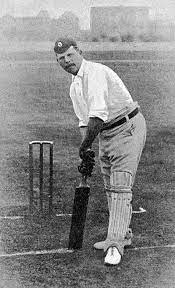
The thought of facing the West Indies fast bowlers of the 70s and 80s in a green bouncy pitch without the current modern day safety equipment like a helmet and abdominal guards is just difficult to even comprehend
Cricket in the past as compared to today’s modern cricket was not as physical and with time, the game transformed into a fast-paced physical game.
Cricket till the 70’s was played without the helmet and very few protective gear was available like the gloves and pad as safety precautions.
While purest say that the art of facing the short pitch ball and playing orthodox cricket is now given way to unorthodox shot making only because modern batsman is less worried to be injured with the quality of the modern protective equipment available.
Cricket Bat
Cricket bat has seen a drastic transformation since it got popular over the years. It has undergone changes on its shape size and overall quality throughout history.
Bats were initially handmade and crafted by skilled craftsman. Bats were very heavy with very thick edges and a pronounce curve, This was for power and durability.
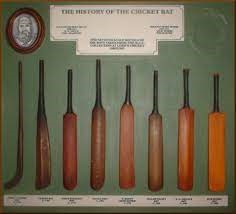
With the evolution of cricket overtime, cricket became more and more played and the game gave rise to power hitting and dynamic game play. Bats had to be adapted according to the change and bats also underwent drastic modifications.
The initial bats looked more like hockey sticks and the oldest bat dates from 1729. When bowlers started pitching the ball, it was needed to change the structure of the bat so that it can hit the bounced ball.
The first shoulderless bats were introduced in the 60s .
In 1974, Scoop bats were introduced which were lighter in weight. The lighter bat allowed players to play numerous strokes.
Science too played an important part in the evolution of the cricket bat. With Technology, materials used for the bat were constantly studied and alternate materials were tested twhich helped bring significant improvements on the quality of the bat.
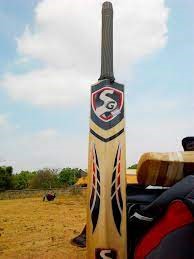
Steam technology allowed bats to become lighter and stronger. This became easier for batsman to play freely and have good bat speed helping them to score effortlessly.
Compressed Bats were introduced into the modern cricket helping the bat to have a wider sweet spot helping in shot making.
Carbon fiber technology brought a drastic change in bat manufacturing, which made the bat extremely light without compromising on the power and free swing movement. The Balance of the bat became better along with being excellent shock absorbent for power shots.
Bats are now custom-made according to batsman’s style of play
Many top batsmen preferred English willow bats. Kashmir willow bats are also popular among top cricketers for its quality and durability, but English willow bats are much lighter and have the best grain quality.
History also witnessed the use of unfair cricket bats which did not follow the spirit of the game
Unfair Cricket Bats
The Mongoose Bat
The Mongoose bat featured a longer handle and a much smaller hitting area and it rather resembled a paddle rather than a conventional cricket bat.It’s design actually increases the sweet spot by 120%, and even the bat speed. That’s not really within the spirit of cricket.
Carbon Graphite Bat
The bat was made from conventional willow and the only thing that made it different was a thin piece of carbon graphite attached to the back. It termed unfair because the carbon graphite strip added more power to the bat in a way that wasn’t natural.
Black Bat
The black bat was different because the face was entirely black and the aesthetic look was enhanced by a bright pink handle. It was termed unfair as the black bat was changing the colour of the ball and black marks on the ball made it difficult to see it under lights.
Dennis Lillee’s ComBat Aluminium Cricket Bat
The aluminium used makes it different from a conventional bat. It’s essentially a metal bat and that goes against the laws of the game.
Ball could be shapeless after few blows with such a bat and was termed unfair.
The Monster Cricket Bat
The Monster Cricket Bat was a bat that was as wide as the stumps. It was termed unfair and against the spirit of the game.
Protective Gear
Helmet
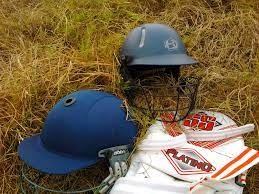
When crowds in the stadium saw Dennis Amiss wear the helmet in the 1977 world series of cricket, they booed and ridiculed the batsman for wearing the protective gear. The helmet immediately showed its importance when Dennis was struck on the face of a Wayne Prior’s delivery. Thanks to the face wiser there was no injury.
Joel Garner, Michael Holding, Andy Roberts, Vanburn Holder and Malcolm Marshall for the West Indies and the Australian duo of Dennis Lillee and Jeff Thomson was reason enough for batsman starting to wear the headgear or the helmet.

Grahan Yallop was the first Test player in history to wear the Helmet in Test Cricket in 1978.
Numerous Incidents forced cricket to seriously look at improving protective gears
Cricket is a game played with a lot of protective gear. This is because bodily injury is very easily caused in the game when the ball strikes the batsman’s body. Some Injuries are not serious enough but some injuries have been fatal.
Some tragic Incidents :
The game has seen some fatal accidents which reinforced the importance of protective equipment.
George Summers of Nottinghamshire died in 1970 after being hit by cricket ball while batting, Abdul Aziz of Pakistan Aziz died as a result of slow off-break delivery hitting his heart hard and died in 1958-59. Ian Folley of Lancashire died in 1993 after being hit by the cricket ball. In a domestic game, India International Raman Lamba was hit by the ball in his head while fielding at short leg position which led to his death. Nari contractor of India also had to retire after he suffered an injury. Australian Opener Phil Hughes lost his life even after wearing the helmet as the ball missed the protective side of the helmet.
Helmets now offer protection that extends beyond the area covered by the helmet.
Gloves and pads have also undergone drastic change. They have become lighter, easy to use and cause less restriction for the player while running. The gears are now made up of advanced materials which give extra protection
With speed and intensity of the game increasing, having advanced protective gear was the need of the hour
Gear with einforced structures, extra padding to soften the blow of a ball hitting of a pace bowler has helped in batsmen being more comfortable and safe.
With advancement of technology, protective gears have become lighter yet highly safe
Fielding Gears
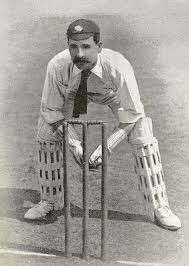
Fielding plays an important part in the game unlike in the past. Wicket Keeper gloves and pads have become lighter and stronger to allow the wicket keeper to move around more freely. The agility of the player is not compromised. Wicket keeper stands near the wicket for a spinner without any fear of getting hit by an inner edge as they wear helmets nowadays helping them to be more safe and sure while collecting the ball.
The clothwear worn are made up of stretchable material and helps the fielder to easily dive and slide on the ground without the fear of hurting the skin
Cricket Shoes
Cricket shoes are of extreme importance and from a leather shoe to the modern material used for sports have made the fielders become faster and less prone to injuries. Specialized sole designs and advanced materials provide better traction and support, enabling players to move swiftly on various playing surfaces. Modern Shoes are light and extremely flexible and with paddings to support the ankles to avoid any injury.
Cricket Ball

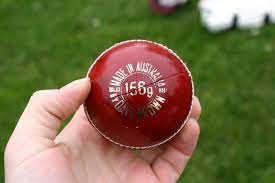
During 1760 to 1841 Duke balls were used. This was the six stitch ball which is still present in the modern day ball.
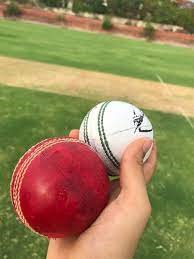
The Red colour ball was traditionally used till the introduction of the world series when limited overs saw the use of White ball. Now White ball is used universally for all limited over test matches while Red ball is used for Test matches
Recently to revive the fading interest of test match cricket, Day Night test matches have been introduced. This is played by Pink Ball. As the name suggest the test match is called the Pink Ball Test Match.
Red Ball has over the years got improved with additionally waxing put to maintain shine and swing of the ball for a longer time
The White Ball is used in Limited over matches as it is more clearly visible than the Red ball in day night matches.
The Pink ball is stitched with black thread and has an extra layer of Lacquer which helps in better visibility and swing as compared to the Red ball
In the present day, Dukes, Kookaburra and SG are the three main brands of cricket ball used in the professional game.
Post the Covid Pandemic, use of saliva on the ball to improve its shine and maintain a heavier side to the ball was banned and ball manufacturers have been constantly trying to innovate and improve the technology used in the ball to maintain shine on the ball for a longer period.
Also Read…How to choose the right cricket gear
Conclusion
The evolution of cricket equipment have drastically improved the quality of the sport making it a more watchable sport than ever.
With growing environmental alarms, manufacturers are producing equipment which are more eco friendly using non toxic materials.
The modern cricket and cricketers are very aware of the environmental concerns and prefer to use recycle or biodegradable material to support the global push for greener practices in sports and recreation.
As mention evolution of cricket and evolution of the cricket equipment go hand in hand and is driven by the pursuit of better performance and safety.
Equipment manufacturers have to adhere to international standards and regulations and are strictly monitored by the cricket bodies to keep the sport safe
With every advancement in bat design, protective equipment and fielding equipment, performance of the sport has improved
Technology keeps improving and so will the improvement in the innovation in cricket equipment.


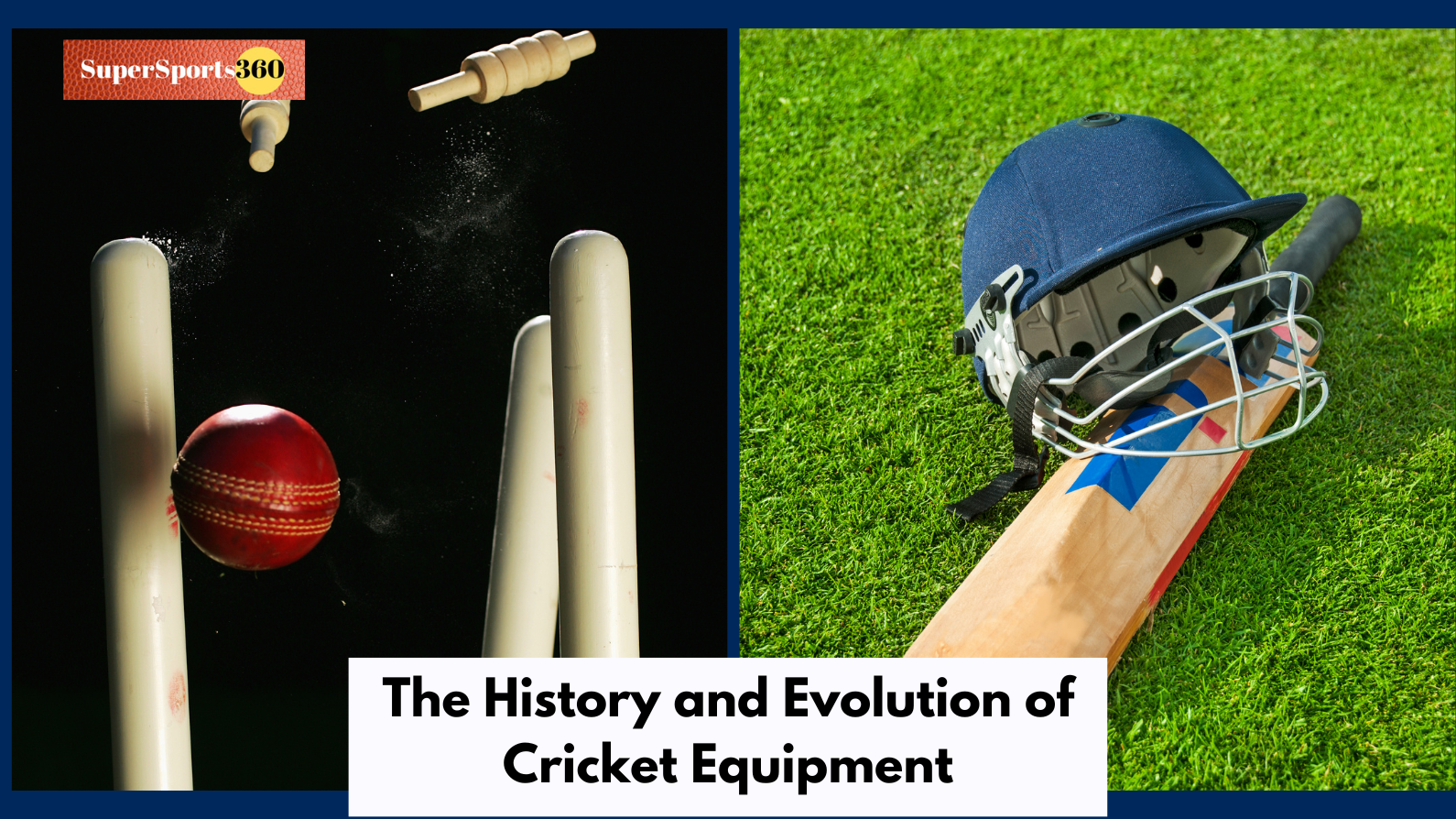
Leave A Comment